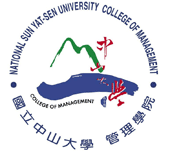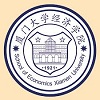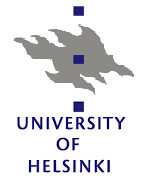Day 1 :
Keynote Forum
Adriana Zaleska-Medynska
University of Gdansk, Poland
Keynote: TiO2-based nanotubes for pollutants degradation
Time : 9:45-10.30

Biography:
Adriana Zaleska-Medynska is a Professor in Chemical Technology at the University of Gdansk and head of the Department of Environmental Technology. She obtained a Ph.D. in 2000 in the field of chemical technology at Gdansk University of Technology (Poland). Following appointment as Visiting Scientist at University of Utah (UT, USA) and California Institute of Technology (CA, USA), she was appointed as adjunct at Faculty of Chemistry at Gdansk University of Technology. During this time she started to study correlation between surface properties and visible light induced photoactivity of TiO2-based materials. She completed D.Sc. (habilitation) in 2009 and in 2012 she became a head of the new research group at University of Gdansk followed by promotion to Full Professor at the same university in 2014. Her current interests concern functional material synthesis and characterization, heterogeneous photocatalysis, environmental technology, air treatment and nanotechnology
Abstract:
Photocatalytic reactions over solid semiconductors in the form of thin films or suspended nanoparticles (e.g. titanium dioxide) have been proposed as an environment-friendly process for removing pollutants from gas and liquid streams. Among other photocatalysts, ordered TiO2 nanotube (NT) arrays have attracted increased attention due to their high surface area, good adsorption ability, highly ordered array structure, open mesoporous nature, excellent corrosion resistance, stable physical–chemical properties and unique ability to photooxidize organic compounds. Considering their unique properties, NTs can be used as photocatalytic materials; however, the low visible light utilization and high recombination rate of photoexcited electron-hole pairs limit their applications. The photocatalytic activity of TiO2 under visible light can be achieved via loading metal nanoparticles (NPs) onto NTs, dye sensitization, hetero-coupling and doping.
In this work, MxOy-TiO2 mixed oxide nanotube layers (M= Ag, Cu, V, Co and Mn) were successfully prepared via one-step anodization of Ti-M alloys. The obtained samples were characterized by scanning electron microscopy (SEM), UV-Vis absorption, photoluminescence spectroscopy, energy-dispersive X-ray spectroscopy (EDX), X-ray diffraction (DRX) and micro-Raman spectroscopy. For the first time, the effect of the applied voltage (30-50 V), second metal content (5-15 wt.%) in the alloy and water content (2-10 vol.%) in an ethylene glycol- based electrolyte was studied systematically to determine their influence on the morphology and photoactivity. The morphology of samples varied from sponge-like to highly-organized nanotubular. It was demonstrated that the anodic oxidation of Ti-Ag alloys led to the formation of TiO2/Ag2O NTs interlaced with silver NPs as in a cake with raisins. Silver NPs have been formed during the in-situ generation of Ag ions and were (i) embedded in the NT walls, (ii) stuck on the external NT walls, and (iii) placed inside the NTs. The photocatalytic activity of the samples was evaluated by analyzing the degradation kinetics of phenol in aqueous phase and toluene in gas phase.
Keynote Forum
Elizabeth Beaumont,
The Founder of Water for Schools, Australia
Keynote: Empowering Schools for Waste Free Safe Hydration during Climate Change: Water for Schools : A Practical Model
Time : 10:30 AM

Biography:
Elizabeth Beaumont, a retired transplant nurse and wildlife advocate, is the Founder of Water for Schools. In 2015 she received a High Commendation from the Premier of Queensland for successfully campaigning an academic institution to ban the sale of water housed in polyethylene terephthalate. To date more than 80,000 bottles have been removed from circulation in favour of filtered water refill stations. Elizabeth has endorsed a children’s Book regarding the marine pollution. She actively volunteers for Surfrider Foundation, Clean Up Australia Day and has appeared on radio within her community and internationally to raise awareness about plastic pollution.
Abstract:
Empowering Schools for Waste Free Safe Hydration during Climate Change:
Water for Schools : A Practical Model
School Children in Australia face a very hot future. Temperatures are increasing and so does the incidents of hospital admissions and increased heat stress deaths.
“There is strong empirical evidence indicating that climate change poses significant immediate and long term risks to the health of Australians.” Deaths associated with heat stress are now higher than deaths associated with natural disasters. See figure 1
Source: p17,” Towards a national strategy on climate health and wellbeing for Australia discussion paper.”
The current paradigm with children attending schools in Australia is they have access to bubblers. Extreme climatic events pose challenges to each municipality and some schools are responsible for harvesting their own water. Hygiene issues will continue to escalate with up facing spigots prone to microbial growth and exposure to heat. Bottled water is for sale in most schools at an unregulated price and housed in Polyethylene terephthalate (PET) and purchased through the school canteen. This limits the dynamic physiological needs arising in children particularly in heat wave conditions.
Identifying the Problems and Potential Solutions
Water for Schools proposes to introduce a small annual affordable levy to ensure that all school children have access to safe chilled, filtered water via the installation of a system that UV purifies and safe guards water against water borne diseases, example, hepatitis, salmonella, and E coli. “ Climate change is likely to affect several other important causes of gastroenteritis in similar ways as Salmonella. “ p. 24 Bambridge et al 2008. This is via the installation of a water filtration system that connects to the existing water supply of the school.
This increases the power of everyone to meet their dynamic needs for water.
Water for Schools works collaboratively with key stake holders and returns a portion of the levy back to Parents and Citizens associations to offset the loss of income. Water for Schools is consistent with Australian Federal Government policy.
- Environmental Sustainability and Development | Marine Pollution | Renewable energy | Trending Market in Pollution Control |
Location: Alfred Square Room
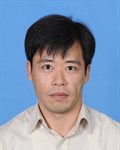
Chair
Jun He
The University of Nottingham Ningbo, China
Session Introduction
Lisa B Bosman
College of Menominee Nation, USA
Title: PVSysCo: Solar energy system comparison and evaluation
Time : 12:00-12:30

Biography:
Lisa B Bosman holds PhD in Industrial Engineering from the University of Wisconsin-Milwaukee. She is currently an Assistant Professor at the College of Menominee Nation, where she serves as the Director of the Solar Energy Research Institute. Her research interests include solar energy performance modeling, entrepreneurial minded learning and STEM education.
Abstract:
According to the U.S. Energy Information Administration (U.S. EIA), renewable energy consumption made up about 13% of the nation’s energy supply in 2013, of which only about 2% was contributed by solar energy. This contribution (by solar) is expected to increase to 20% by 2040. In 2010, the U.S. Department of Energy announced the SunShot Initiative, which aims to reduce the total installation cost of solar technologies by 75% between 2010 and 2020. This implies that solar energy is a top priority in the U.S. and many other countries. The purpose of this research is to design and implement a customer decision support system to determine the appropriate solar PV technology to install depending on the customer, technological and geographical location attributes. This research develops a solar decision support system that incorporates: Multiple comparison of six different commercially available PV solar technologies (e.g., crystalline, amorphous and thin film), a variety of system configurations (e.g., battery based PV systems), a variable monthly derate factor (e.g., snow only during winter), annual degradation by component (e.g., panels and inverter), module configurations (e.g., flat-plate, cylindrical panel), temperature coefficient modifications and albedo coefficient and inverter selection (e.g., microinverters). PVSysCo, which overcomes these deficiencies, is introduced as an alternative method to better estimate the performance and reliability of PV energy systems over time. Practically speaking, PVSysCo provides consumers with the ability to make educated choices for optimizing solar energy investment returns and it allows insurance underwriters and home appraisers the ability to accurately assess actual cash value of used PV systems. This model is conceptually similar to the Kelley Blue Book, which allows consumers to estimate the value of a used car. This “Solar Energy Blue Book”, a solar energy system evaluation tool, will allow consumers to estimate the value of a used solar energy system, taking into consideration many factors, such as latitude (which determines the quantity of incoming sunlight) and zip code (which determines the approximate cost of electricity). PVSysCo allows potential solar energy system consumers the opportunity to understand the return on investment for new and in particular, used solar energy systems.
L F D Z Gunathilaka
University of Sri Jayewardenepura, Sri Lanka
Title: Impact of climate transition risk of long term financial feasibility of rubber manufacturing organizations in Sri Lanka

Biography:
L F D Z Gunathilaka was employed in the private sector organization as a Manager Research and Development at Latex Green, who manufactures mattresses, pillows and other bedding products to the export market, factory located in a dedicated export processing zone. Presently she is working with calculations of product water foot print for latex products and pursuing PhD in Management at University of Sri Jayawardenepura, Sri Lanka.
Abstract:
Manufacturing has a role to play in both climate change mitigation and adaptation. Mitigation focuses on limiting the speed and scale of transition, making allowances for carbon economy change and exploitation opportunities to alter the financial viability, the capital stock and the business models. It has typically received utmost attention in policy circles, such as debates, over carbon pricing as a mechanism to reduce greenhouse gas (GHG) emissions across the economy. The purpose of this study is to examine the question of long term financial feasibility risk of transition of climate change to a low carbon future as an implication for stakeholders. The main objective of the study is on the risk associated with mitigation of climate change labeled as carbon risk and the associate long-term financial feasibility that may impact on the performance of assets and business portfolios at different stages to establish carbon management strategies effectively. This case study revealed that the commitments to maintain carbon neutrality in the upcoming application periods (year 2015-2021) by implementing the plan and achieving 7.24% of carbon reduction to its footprint against the base year (2015). Company will continuously maintain its carbon neutrality during 2016-2021 periods by offsetting 93% of carbon footprint calculated in each year after achieving 7.24% of emission reduction target through 321909 (Kilogram Carbon dioxide equivalent) kgCO2e emission reduction from the total emission. Impact of climate transition risk of loan-team financial feasibility is needed to reconcile businesses needs with concern to the environment to achieve prosperity in future. Recommendations are made to achieve low carbon economy while effectuating business performance in the long run.
Chih-Cheng Tang
National Sun Yat-sen University, Taiwan
Title: The degradation characters of polyvinyl chloride eroded in the natural environment
Time : 14:00-14:30

Biography:
Chih-Cheng Tang currently working at National Sun Yat-sen University, Taiwan
Abstract:
Statement of the Problem: Organisms which ingest micro-plastics may not only experience physical harm, such as internal abrasion and blockage but are also exposed to chemical additives in plastics. These include persistent, bioaccumulating and toxic chemicals which adsorb and accumulate on plastic from the water column. Comprehending the surface change of micro-plastics eroded in the natural environment could enlarge our knowledge of the interaction of pollutant and plastic marine debris. The extent and rate of trace metal and hydrophobic organic chemical (HOCs) (de)sorption are influenced by the surface properties of sorbents, such as eroded polyvinyl chloride (PVC) in the coastal environment. These surface properties could explain the interactions among plastics, microbes and pollutants. The primary objective of this research is to understand the surface properties such as altered surface functional groups and surface topography of aged PVC pellets under heat, UV and solar in seawater.
Methodology & Theoretical Orientation: Knowledge of polymer morphology is essential for understanding the processes and mechanisms of degradation. The morphology of eroded PVC was examined using Environmental Scanning Electron Microscope (SEM), equipped with Spectrometers Energy Dispersion X-ray (EDS). FTIR was used to identify functional groups on the PVC surface after environmental erosion.
Findings: The surface of virgin PVC seems smooth and uniform, but the eroded one is rough and uneven from electron photomicrographs of the surface topography. Thermal degradation of PVC increases peaks at 1595 cm−1 which implies the formation of C=C and 1735 cm−1 as ester carbonyl bonds (–COO–). On the other hand, UV degradation of PVC increases peaks at 1735 cm−1 which is ester carbonyl (–COO–) and 2500-3500 cm−1 which is carboxylic acid (–COOH). However, the FTIR spectra for eroded PVC via solar with seawater is similar to the virgin one.
Conclusion & Significance: Thermal and UV degradation presented different PVC morphologies such as surface area, pore size, pore volume and pattern. In addition, the increased functional group went through a dehydrochlorination mechanism during the aging process and transformed the chemical properties of PVC. Whether the PVC eroded by solar in seawater or not, this uneven surface seems to originate from the skin of virgin PVC degraded but no new functional group was found. It suggests that chemical properties of PVC seem durable for a long time in the environment.
V Preethi
Hindustan University, India
Title: Photocatalytic Reactors For H2 Recovery From H2O And H2S Splitting
Time : 14:30-15:00

Biography:
Dr.V.Preethi is an Associate Professor in Hindustan University, Chennai, India. She received her Ph.D. degree in Environmental Engineering from the Anna University, Chennai. She completed her MS in Environmental Technology from Autonomous University of Barcelona (UAB), Spain. She is the author for 7 publications in peer-reviewed journals with high impact and more than 25 oral communications in international conferences and symposium. She is also the author of 2 patents. In 2015 she was awarded the Young Scientist Award for Hydrogen Energy and Advanced Materials (HEAM) by National Institute of Technology, Bhopal and Indian Association of Hydrogen Energy and Advanced Materials. Apart from that she also received 4 other awards for her innovative research findings. She has worked as a researcher for two years in Indian Institute of Technology, Madras, UAB, Spain. Also she has five years of teaching experience and totally 11 years of experience in both research and academics. She organized and conducted an International Conference on Sustainable Environment and Energy (ICSEE 2017) funded by DST, Government of India. She is the principal Investigator for a project titled ‘Recovery of Hydrogen from Industrial Waste Streams’ funded by DST, Government of India.
Abstract:
Hydrogen is a clean fuel and an efficient energy carrier. Photocatalytic hydrogen production from cheap raw materials like water and industrial waste hydrogen sulfide provides an economical, environmentally friendly solution for future. To ensure efficient conversion of incident solar light photons to charge carriers, appropriate design of a solar photocatalytic reactor is most important. This review focuses on various configurations of photocatalytic reactors used for hydrogen recovery from both water and hydrogen sulfide (both liquid and gas-phase). From the literature review, it was observed that the rate of reaction was much influenced by the reactor configuration adopted. Based on the observations, very few studies were focused for development of solar photo-reactor for the generation of H2. Hence the effective solar photocatalytic generation of H2 from H2S by developing a suitable photo-reactor is essential for large-scale hydrogen recovery.
Jin Xiong
University of Chinese Academy of Sciences, China
Title: The formation and migration of sulfur trioxide over V2O5/TiO2 catalyst in SCR of NOx with NH3
Time : 15:00-15:30

Biography:
Jin Xiong is currently pursuing his PhD in Environmental Engineering from University of Chinese Academy of Sciences, Beijing, China. He has completed his Bachelor’s degree in Chemical Engineering and Technology from the Central South University, Changsha, China. His research interest is on SO3 formation mechanism and migration route during SCR DeNOx process and SO3 emissions collaboratively controlling.
Abstract:
The oxidation of sulfur dioxide (SO2) to sulfur trioxide (SO3) is undesirable during the selective catalytic reduction (SCR) of nitrogen oxides (NOx) found in the flue gas of power plants. Sulfur trioxide has toxicity over 10 times than that of SO2 and is highly corrosive, resulting in corrosion of equipment and pollution of the environment. The objectives of this research are to establish the fundamental kinetics and mechanism of SO2 oxidation over supported V2O5/TiO2 catalyst and establish sulfur balance, then, use these insights to propose a basic theory for collaboratively controlling SO3 emissions. A series of supported V2O5/TiO2 catalysts were prepared with various V2O5 contents: 0.5%, 1%, 1.5%, 3%, 4% and 5%. Raman spectroscopy is used to determine the coordination of surface species. Isolated vanadia species were dispersed on the TiO2 surface as Ti-O-V bonds at VOx coverage below the monolayer. Sulfur dioxide temperature-programmed desorption and in situ diffuse reflectance infrared Fourier transform spectroscopy were conducted to study the interaction between SO2 and V2O5/TiO2. It was found that Ti-O-V was demonstrated to play a critical role in the SO2 adsorption and oxidation. A possible reaction mechanism of SO2 oxidation over V2O5/TiO2 catalyst was established in this study. The turnover frequency for SO2 oxidation was very low, approximately 10-5 s-1 at 320 oC. Over the range of conditions studied, the rate of SO2 oxidation is zero-order in oxygen and first-order in SO2 and the apparent activation energies for SO2 oxidation was obtained. The decrease of SO2, the gaseous SO3 and the sulfate deposited on catalyst surface were to be quantified by Fourier transform infrared spectrometer (FTIR), PENTOL SO3 analyzer and ion chromatography (IC), respectively. Then, the sulfur balance was established.
Mesi Shinta Dewi
Environmental Sciences Universitas Indonesia, Indonesia
Title: Green house for urban area in Indonesia: Are we ready to adopt green building concept?
Time : 15:45-16:15

Biography:
Mesi Shinta Dewi is an Urban Environmental Engineer, working for Local Government of Tangerang Municipality since 2003. She is currently pursuing PhD in Environmental Sciences at Universitas Indonesia. She has obtained her Bachelor’s degree from Bandung Institute of Technology as an Environmental Engineer in 1998 and in September 2007 she got scholarship from National Development Planning Agency to take Master’s program in Regional and Urban Planning, Bandung Institute of Technology and graduated in April 2009.
Abstract:
Indonesia started to implement the concept of green building but it should be underlined that it is different with some developed countries which already targeting a single house as important object in green building concept implementation, Indonesia has not specifically targeting housing sector in green building concept implementation while in fact land cover of metropolitan cities in Indonesia were dominated by single homes. This study aims to find out whether of urban communities in Indonesia ready in adopting green building concept especially during operational phase of building. Operational phase of a building is the longest period where consumption patterns of its inhabitants become the key to achieve the objective of green building concept. Survey of 96 respondents was conducted to examine behavior and consumption patterns. Descriptive statistical analysis was conducted to determine propensity to consume. Statistical analysis was used as dynamic model basis to determine the sustainability of cities related to socio-economic conditions of inhabitants. GIS analysis in Tangerang City which is considered to represent the characteristics of metropolitan cities in Indonesia, shows that land cover was dominated by the housing area up to 51.7% while industrial areas only reached 24.09% and commercial areas only 15.37%. Results of analysis showed that level of education have a considerable influence on the awareness that is the higher the education level. The results then used as basis to build dynamic model to predict carbon footprint emitted. Mostly level of education population are high school and it would turn out to be significant problems, since statistical analysis show that people with education minimum bachelor’s degree would have sustainable consumption pattern. Carbon footprint analysis with dynamic system shows that annual carbon footprint per capita will continue to increase due to the absence of changes in the consumption patterns of residential activity.
Presley K Wesseh
Xiamen University, China
Title: Optimal power supply strategy for China towards 2050 under high renewable energy penetration
Time : 16:15-16:45

Biography:
Presley K Wesseh is passionate about energy economics and believes that economists should take the lead in critical energy solutions. His research develops and applies econometric models, computable general equilibrium models, real options valuation models and optimization methods in order to study and explain the paradigm of electricity markets and renewable energy resources, the energy-economy-environment system and climate change, as well as the evolution and dynamics of fossil-fuels price volatility and hedging strategies. A couple of his findings have been published in reputable academic journals such as Energy Economics, Energy Policy, Energy, Applied Energy, Journal of Cleaner Production, Renewable and Sustainable Energy Reviews, etc.
Abstract:
The production and utilization of energy constitutes a significant share of global environmental costs and damages. However, considering the importance of energy for growth and development, the need for a sustainable energy transition cannot be overemphasized and this is further exacerbated by growing concerns about climate change and few cases of nuclear accidents. The purpose of this study is to quantify the impacts of a potential transition towards renewable electricity and estimate the investment requirement for achieving a low-carbon electricity generation mix. The framework developed in this study to assess the optimal technology combination is built using MESSAGE, a bottom-up energy supply optimization model. The results point to wind and solar as the most promising technologies and provide insights that a carbon tax implemented in isolation is not a cost-effective strategy for mitigation.
- Pollution Solutions | Pollution Effects | Pollution Sources | Waste Management | Human Impact on the Environment
Location: Alfred Square Room

Chair
V Preethi
Hindustan University, India
Session Introduction
Marie Stybnarova
Agrovyzkum Rapotin Ltd., Czech Republic
Title: Changes in grassland chemical soil properties four years after cessation of long-term fertilization with compost and slurry
Time : 11:30-12:00

Biography:
Marie Stybnarova has her expertise in evaluation of grassland management and its effects on the floristic composition, forage yield and quality (determination of organic matter digestibility by in vitro tests), solving projects based on the experiments with different grasslands management, attending conferences with active results presentations, publication activity.
Abstract:
Statement of the Problem: There is an advantage of organic fertilizers which lays in the fact, that their application positively influences the soil organic carbon content. Microorganisms play a key role in organic matter decomposition, nutrient cycling and other chemical transformations in soil. It follows that; there should be a long-term residual effect of organic fertilizers’ application which was, however, only rarely investigated in grasslands. Moreover, additions of organic matter from various sources can differ in the effects on soil organic matter and biological activity. Generally, the composts are slowly decomposed in the soil. The aim of our study was to investigate the impact of the long-term application of different types and doses of organic fertilizers on the chemical soil properties of grasslands.
Methodology & Theoretical Orientation: A long-term small plot trial was established in 2004 in locality of Rapotín, Czech Republic. During 2004-2013, the experiment was fertilized with compost and slurry, both with the range of stocking rates 0.9, 1.4 and 2.0 livestock units (LU)/ha (corresponding to 54, 84, and 120 kg N/ha), and control without any fertilizer. The plots were cut 2-4 times per year depending on given dose of fertilizer. During 2013-2016, the regular management was ceased and the grasslands were not fertilized anymore.
Findings: Chemical soil parameters such as total organic carbon, total Kjeldahl nitrogen, humic acids and fluvic acids were determined. Based on the data about the soil chemical parameters from two investigated years (2011 and 2016) our results suggested significant effect of the grassland management (type of organic fertilizer) and also significant effect of the year.
Conclusion & Significance: Our findings indicated that additions of organic matter from various sources differ in the effects on soil organic matter and other chemical soil parameters, including the ratio of humic acids and fluvic acids.
Lavtizar Vesna
Kobe University, Japan
Title: Water stability of a new antifouling biocide Tralopyril and its toxicity to freshwater algae, Pseudokirchneriella subcapitata
Time : 12:00-12:30
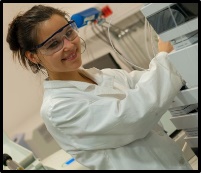
Biography:
Vesna Lavtizar is a JSPS invited Researcher at Kobe University, Japan. She is currently focusing on investigation of environmental risks of newly emerged antifouling biocides. Her previous work was performed at the collaborative universities in the Netherlands and in Slovenia, involved ecotoxicity and stability studies of organic pollutants in terrestrial and aquatic compartments. Her main topics of interest are newly emerged antifouling agents, single and mixture toxicity studies as well as environmental fate studies of antifoulants.
Abstract:
Statement of the Problem: The attachment of the aquatic organisms on unprotected ship hulls significantly increases the fuel consumption. The principal strategy to prevent the biofouling is the application of antifouling system, containing biocides. One of the newly emerged biocides is tralopyril (TLP) showing promise especially towards hard fouling (e.g., barnacles and mussels). Since all antifouling biocides are toxic by nature, the risks of their toxicity to non-target species has to be evaluated, however not much scientific ecotoxicity data is available for TLP. The aim of our study was to investigate the toxicity of TLP on freshwater algae, Pseudokirchneriella subcapitata together with the water stability study of TLP.
Methodology: Acute, 72-hours toxicity test was performed on freshwater algae P. subcapitata, following ISO guideline. Six TLP concentrations (1-100 µg/L) were tested and algal density for each concentration was measured after 0, 24, 48 and 72 hours using fluorometry. The stability of TLP in algal media was assessed using HPLC with fluorescence detector.
Findings: Chemical analysis showed that TLP rapidly hydrolyzes in water media with a half-life of 1.8 hours for the initial concentration 100 µg TLP/L. Along the TLP degradation, one degradation product (CL) formed, of which concentrations were also quantified. The toxicity to freshwater algae was observed already after 24 hours exposure with a 100% algal growth inhibition at 100 µg TLP/L. Due to the rapid degradation of TLP, the growth inhibition could only be plotted against the nominal concentrations. The following nominal EC50s were obtained: 53, 60 and 73 µg/L for 24, 48 and 72 hours exposure time, respectively.
Conclusions: Results indicate high acute toxicity of TLP to freshwater algae, which is with time diminished due to the transformation of TLP to a less-toxic transformation product.
Sangjo Jeong
Korea Military Academy, South Korea
Title: Catalytic reduction of nitrate in water with catalysts made of palladium-indium on aluminum-pillared montmorillonite
Time : 12:30-13:00

Biography:
Sangjo Jeong is presently working at Korea Military Academy, South Korea
Abstract:
Human activities occasionally increase the inflow of nitrate to the aquatic ecosystem. The inflow of nitrate not only deteriorates the quality of the ecosystem by promoting eutrophication of water but also often restricts its use as drinking water. Various methods have been studied to find the most promising technology with simple facilities and fast processing time for the removal of nitrate contained in fresh water by comparison. Recently, the development of catalysts using clay minerals as supporting materials are getting attention along with the verification of their efficiency. In this study, palladium (5% wt.) and indium (0.1-2.5% wt.) are added to montmorillonite each as a catalyst and promoter for nitrate removal. In addition, aluminum and cerium are pillared to montmorillonite to increase the activity of catalysts. The nitrate removal efficiency of this catalyst was evaluated with a batch system. Hydrogen and carbon dioxide were used as a reducing agent and pH controller, respectively. The concentration of nitrate and nitrite were analyzed by HPLC after filtration. Ammonia was analyzed as a byproduct by the salicylate method. In the case of the palladium-indium added to montmorillonite (MPI), the nitrate degradation constant k=0.20 min-1 g-pd was shown. When the montmorillonite was pillared with Al and had Pd-In added after AMPI, the decomposition constant increased to k=0.53 min-1 g-pd. In contrast, adding Ce to AMPI showed no significant effect. In the decomposition process, the production of ammonia increased along with the efficiency of the catalyst, which was up to about 50% of initial nitrate concentration for AMPI. However, production of nitrite by nitrate decomposition was not significant. Furthermore, we will investigate the structural characteristics of the fresh and used catalysts for nitrate reduction by using XRD, FTIR, BET SSA, SEM and XPS to improve the nitrate decomposition efficiency and to suppress ammonia generation. Nitrate degradation properties and structural characteristics of catalysts will be discussed.
Jun He
The University of Nottingham Ningbo, China
Title: New analytical method for simultaneous measurement of multiple organic tracers in aerosols
Time : 14:00-14:30
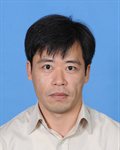
Biography:
Jun He has received his BSc and MEng from Nankai University, China and PhD from National University of Singapore. After Postdoctoral research in Singapore-Delft Water Alliance (2009-2010) and working in Siemens Global Research Centre (2010-2011) in Singapore, he joined The University of Nottingham Ningbo China, taking up Assistant Professor (2011) in the Department of Chemical and Environmental Engineering and got promoted to Associate Professor in 2014. He is specialized in environmental science and engineering, mainly including (but not limited to) research areas in: Atmospheric chemistry, air pollution control, water quality and adsorbent media development, soil contamination and remediation, etc.
Abstract:
Biomass burning and fungal spores can have serious adverse effects on human health and regional air quality. Due to the complexity of their emissions, it is more reliable to utilize organic aerosol tracers to estimate their impacts. Levoglucosan and its isomers mannosan and galactosan are ideal biomarkers for biomass burning, while arabitol and mannitol are widely used as good tracers for fungal spores and biogenic aerosols. As these compounds have poor volatility and thermal stability, derivatization is normally required before their analysis under high temperature. For the determination of these five organic tracers, though GC-MS is widely applied in most studies, this method demands organic solvents for extraction and it is less cost-effective and very time-consuming; in addition, it can also cause the loss of target compounds due to derivatization. In addition, no single analytical method has so far been reported for one-step simultaneous measurement of the abovementioned 5 organic tracers. Hence, this study was to develop a new high-performance liquid chromatography-electrospray ionization-tandem mass spectrometry (HPLC-ESI-MS/MS) method to analyze these 5 polar organic compounds in aerosols without any derivatization pre-treatment to greatly reduce sample preparation time. Ultrapure water instead of organic solvent is applied as an extraction solvent under ultrasonic condition. After obtaining the optimized analytical conditions, the LOD, linear correlation, recovery of spiked standards, reproducibility of standards and aerosol samples were tested to demonstrate the reliability of the newly developed process for determining these tracers. Lastly, both extraction and analytical methods developed were applied to the real-world aerosol samples that were collected in four representative sites of Yangtze River Delta (YRD) in China to study their profiles, which has shown this method to be a convenient and efficient way to investigate the impacts of biomass burning and fungal spores to regional air quality.
Ai-Lin Shen
China Steel Corporation, Taiwan
Title: Using computer simulation technology to improve the removal of volatile chemicals from fuel gases and process waters
Time : 14:30-15:00

Biography:
Ai-Lin Shen is a Chemical Engineering. Her research areas include electrochemistry, material, spectral analysis, data analysis, pharmaceutical procedure, chemical process engineering, energy technology and carbon capture and her research region is cross-field. By analyzing large amounts of data, she proved the multi-peak curve fitting method, which has been applied for decades to a variety of spectra, to be ineffectual; the ideas she has applied are completely original and subvert traditional concepts. Her current work mainly focuses on chemical process improvement and energy technology research.
Abstract:
Industrial coking processes usually involve downstream gas purification and process water treatment to recover economically valuable chemicals, while reducing environmental impact. The removal of volatile organic compounds, mainly ammonia and hydrogen sulfide, is a key procedure. We can use a scrubber system to scrub some of volatile organic compounds from Coke Oven Gas (COG) to process water and a distillation system to remove volatile organic compounds from the process water to the acid gas, which is then transported to the sulfur plant. Optimized industrial processes can reduce operating costs; however, industrial trials are costly and may adversely affect on-going process operations. Unfortunately, such processes are too complex to simulate in the laboratory, while attempts to understand the processes’ characteristics can result in problems restoring normal working. For the mature processes, if we can understand both basic material properties and chemical reactions, we can use factory operation data to build a process simulation model and make process operation predictions in a cost-effective and convenient manner. Our model offers a reasonable simulation: The difference between the predicted result and the actual factory data is typically less than 30%; some of our case studies show less than 10% divergence. The operational trends analysis also provides an operational reference for the industrial facility, e.g., one of the model’s simulation results has reduced energy loss by 1% using a simple operational step change.
Anirudra Parajuli
University of Helsinki, Finland
Title: Comparison of volatile PAH concentrations in urban and rural areas in Paijat-Hame
Time : 15:00-15:30

Biography:
Anirudra Parajuli has completed his Masters and PhD degrees. He is interested in studying how persistent organic anthropogenic pollutants like the polyaromatic hydrocarbons (PAHs) affect the abundance and diversity of the bacteria associated with the human immune system, both in the living environment and in human body.
Abstract:
Polyaromatic hydrocarbons (PAHs) are a group of organic pollutants produced as a result of incomplete combustion or pyrolysis of carbonaceous material. Exposure to PAHs is associated with adverse health effects including cancer, respiratory and immunological disorder. The purpose of this study was to examine the difference in the concentration of PAHs in the ambient air between urban and rural sites in Päijät-Häme; a region in Southern Finland and if any significant sources could be identified. The study was based on an assumption that higher gaseous PAH-concentrations would be measured in urban areas than in rural areas because of the greater volume of traffic, higher number of houses and the heating required. The PAHs at the study sites were collected using passive sampling devices (PSD) consisting of low-density polyethylene lay-flat tubing filled with high purity triolein for a period of 2 weeks. Altogether 7 PAH-compounds namely acenaphthylene, acenaphthene, fluorine, phenanthrene, anthracene, fluoranthene and pyrene were identified using Gas-Chromatography-Mass Spectrometry (GC-MS). Phenanthrene was the most abundant chemicals in both urban and rural measurements (44% and 45%, respectively). The mean concentration of total PAHs was higher in the rural sites (11±6.5 ng/m3) compared to the urban sites (9.1±1.9ng/m3). The variation of the rural site measurements was significantly larger than those of urban sites (Moses Extreme Reactions Test, p<0.001). The total PAH concentration as well as fluorene, fluoranthene, acenaphthene and phenanthrene correlated negatively with broad-leaved and mixed forests within 200 m and 500 m radius of the study sites in the city area. No such correlation was observed in the rural sites. The farming activity in 16 out of 30 rural sites however seemed to increase the total PAH concentration (Mann-Whitney U-test, p=0.018). This striking difference in PAH levels in rural areas highlights the effect and importance of human activity on ambient air quality and emissions of PAHs with grain dryers along other agricultural heavy machinery identified to be the highest PAH emitters.
Oanh Pham
Osaka Prefecture University, Japan
Title: Emission source of PAHs in PM2.5 particle in ambient air of Sakai city, Osaka
Time : 15:45-16:15
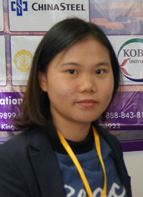
Biography:
Oanh Pham is a Doctoral student who is interested in organic pollution in atmosphere. After obtaining Bachelor’s degree in Environmental Technology, she joined Master’s course of Applied Chemistry Department, Major Environmental Chemistry. She has experienced collecting TSP and PM2.5, analyzing BPA and PAHs along with using receptor models for acknowledging the pollution trends, sources and effects. She is interested in the effects of PAHs, besides using TEF method to assess the cancer risk. Currently, she has been investigating the reactions between PAHs and air pollutants in ice under effect of light.
Abstract:
Statement of the Problem: PM2.5 whose diameter is smaller than 2.5 mm can travel through airway and deposit into lung tissue. Moreover, PM2.5 carries many harmful compounds including polycyclic aromatic hydrocarbons (PAHs), byproduct from incomplete combustion of organic materials. For better knowledge about PM2.5-bound PAHs (p-PAHs) in Sakai City, Osaka, we measured PAHs in gas phase and particle phase (PM2.5) and apportion the sources as well as assess the lifetime lung cancer risk (LLCR).
Methodology & Theoretical Orientation: Using the low volume air sampler (LVAS) with flow rate of 4 L min-1, particles and gas phase of PAHs were collected on glass fiber filter (GFF) and polyurethane foam (PUF), respectively. Samples were collected on the rooftop of 3-storey building in Osaka Prefecture University, Sakai City, Osaka, Japan. HPLC was used for analyzing 11 PAHs including phenanthrene, anthracene, fluoranthene, pyrene, benz(a)anthracene, chrysene, benzo(b)fluoranthene, benzo(k)fluoranthrene, benzo(a)pyrene, dibenz(a,h)anthracene, indeno(1,2,3-cd)pyrene. Diagnostic Ratios (DR) method for apportioning the PAH’s sources. Backward trajectory was used for tracing source location.
Findings: Main sources of PAHs were gasoline evaporation, vehicular emission and coal combustion. There was no significant correlation between PAHs and air pollutants (NOx, SO2, NMHC, etc.) at night time. The results showed that the gaseous PAHs were from local sources while the PM2.5-bound PAHs were from distant place. Backward trajectory results showed East Asia might be one of emission source’s locations of PAHs in PM2.5 in Sakai City, Japan. The mean TEQ and MEQ in particle phase values were higher than annually averaged standard of 1 ng/m3 of EPA.
Conclusion & Significance: Based on the TEQ values, Sakai City air were considered to be harmful to human health. Because atmospheric pollution is a global issue, there is a need for international policy about PM2.5 and harmful substances on it.
Tholiso Ngulube
University of Venda, South Africa
Title: The treatment of dye wastewater using natural South African magnesite
Time : 16:15-16:45

Biography:
Tholiso Ngulube is currently pursuing her PhD in Environmental Sciences at the University of Venda in South Africa. She is a Member of the Young Water Professionals in Southern Africa. She has also published articles in international peer reviewed journals and has attended various international conferences. She has been serving as a core Lecturer at Applied Centre for Climate and Earth Science Systems (ACCESS) and is also a Tutor and Mentor at the University of Venda.
Abstract:
Discharging industrial colored wastewaters into aqueous environments can cause adverse effects on aquatic life due to the toxic nature of synthetic dyes. The present study aimed to evaluate the efficiency of using natural South African magnesite to remove an anionic dye from aqueous systems. The natural nanosorbent was characterized by Transmission Electron Microscopy, Fourier Transform Infra-Red and X-ray Diffraction analysis. Various important parameters namely contact time, initial concentration of dyes, magnesite dosage, solution temperature and solution pH were optimized to achieve maximum adsorption capacity. The XRD results revealed that raw magnesite contains magnesite, periclase, dolomite and quartz as the crystalline phases. Optimum conditions were observed to be 60 min of agitation, 0.1 g dosage of magnesite per 50 mL of aqueous solution, 40 mg/L initial dye concentration and room temperature. Removal of DR81 from aqueous solution was observed to be independent of initial pH of the aqueous solution. The adsorption ratio toward 40 mg/L of DR81 was 96.27%. The results indicate that natural South African magnesite is an efficient material for the removal of DR81. The magnesite, due to high accessibility, low cost and non-toxicity can be considered a good replacement option of other high cost materials used to treat colored wastewater especially in developing countries like South Africa.
- Pollution Effects
Location: Novotel Melbourne St Kilda

Chair
Dr. Vesna Lavtizar
PhD, Kobe University, Japan
- Human Impact on the Environment
Location: Novotel Melbourne St Kilda
Chair
Dr. Veronika Suchomelova
PhD, Agrovyzkum Rapotin Ltd.




